Dermal-plated croc
Right after that flying rhino, I also modded this croc.

Permalink CommentsTags: photography, toys
Right after that flying rhino, I also modded this croc.

Permalink CommentsTags: photography, toys
I had some fun modding a little rhino toy, but I forgot to take a “before” picture.


Permalink Comments (1)Tags: photography, toys
From back on December 11, 2017.

Permalink CommentsTags: photography
Unlike the last one, this one didn’t come for free with some nuts.

Now what to replace it with… although I like it, a known failure every year or two probably isn’t worth the hassle.
Looking through my photo directories to eliminate some cruft, I was fairly unsuccessful. But I figured I’d share these two pictures.
In what is probably the biggest visual change since I first created this theme back in ’05 — yes, it’s that old! — on June 2, 2011 I replaced the header image with a picture I took a month prior in the Keukenhof.
The opportunity presented itself to experiment slightly with decent JPEG compression, rather than simply depending on GIMP’s output, which unfortunately is virtually guaranteed to be suboptimal. Since all I did was crop and resize, I used PNG as my working format. I might’ve been able to use jpegcrop and jpegtran, but since I was going to re-encode in a lossy manner afterward that would have been nothing but needless extra effort.
First I tried cjpeg, which doesn’t support a lot of input filetypes, so I had to save a copy as BMP.
cjpeg -quality 80 -optimize -progressive -dct float -outfile test80.jpg head.bmpThen I discovered that imagemagick can do the exact same thing, optimized by default and everything. It also uses libjpeg under the hood, so the resulting image is exactly the same.
convert -quality 80 -interlace plane head.png test80.jpgThat results in JPEGs that are about as small as they can get without enabling options that might not be readily supported by all viewers. I wrote a (very) simple shell script to aid with a quick overview of size versus quality.
#!/bin/bash
#jpegs.sh
filename=$1
extension=${filename##*.}
filename=${filename%.*}
convert -quality 30 -interlace plane $1 ${filename}30.jpg
convert -quality 40 -interlace plane $1 ${filename}40.jpg
convert -quality 50 -interlace plane $1 ${filename}50.jpg
convert -quality 60 -interlace plane $1 ${filename}60.jpg
convert -quality 70 -interlace plane $1 ${filename}70.jpg
convert -quality 80 -interlace plane $1 ${filename}80.jpgMy rationale is that any quality under 30 is most likely too ugly and anything over 80 will result in a file size that’s too large for my intended purpose of using lower quality — but not low quality — images on the Internet.
I also decided it was time to get rid of my half-hearted concessions to Internet Exporer. This in no way inhibits readability of the content.
I like my pictures rotated in such a way that I don’t have to depend on application support for them to be displayed correctly. jpegtran (pre-installed on most distros) is a wonderful application with many features, including lossless rotation, but it’s too laborious for my purposes. That’s where jhead comes in.
You can simply go into a directory, run a command like the following, and everything will be done automatically for you.
jhead -autorot *.JPGOf course I wouldn’t run it if you don’t have a backup available. I always keep the pictures around on my camera until I’ve confirmed that all processing was successful and then I still don’t delete them until the adjusted files were also copied to my external HDD in my semi-regular backup regime.
Another utility that can perform the same task is exiftran, but despite being more or less dedicated to this very purpose it’s not even easier to use: I’d expect exiftran *.JPG to default to the equivalent of the jhead -autorot *.JPG command I posted above, but instead you have to use exiftran -ai *.JPG. All other things being equal for my purposes, I decided to go with jhead because it has many more features — although last year I decided that exiv2 is superior to jhead in ease of use for most of those features.
If you’re just looking for the occasional lossless rotation, you could also try the Geeqie image viewer and manager. It integrates calls to exiftran, but beware that you explicitly have to choose the lossless option, as there are also lossy rotate options.
Permalink CommentsTags: photography
As always, in Ubuntu it’s a piece of cake with sudo apt-get install exiv2.
With exiv2, exiv2 ad -a [-]HH[:MM[:SS]] file does the job.
For example, my camera was still on DST when I shot my new year’s fireworks pictures, which made them appear as if they were shot at 1 AM. Thus, I ran the command exiv2 ad -a -1 *.JPG to fix it.
I use a file named exif-copyright-2010.txt (and another one for 2009 etc.) with just two lines in it, which I apply instantly when grabbing pictures from my camera. This file contains the following lines.
add Exif.Image.Artist Ascii "My name"
add Exif.Image.Copyright Ascii "Copyright © 2010 My name"This can be applied using exiv2 -m /somewhere/exif-copyright-2010.txt file. I used to mess about with batch processing in graphical applications — which worked fine — but this is much faster.
You can read more about all of this on the official website.
Last night I decided to try to take some pictures of fireworks without a tripod. Considering the freezing temperatures I knew I was in for disaster, but with plenty of space available on my memory card, that didn’t really matter.



I think the most important thing we just observed is that if you want to take nice pictures of fireworks, you should probably not stand upwind — although considering the distance involved that would have taken almost as long as the fireworks lasted (about 20 minutes). I did zoom in quite a bit. On the other hand, you’ll miss some or most of the smell of gunpowder if you do that, which is an important part of the watching experience, after all.
Happy new year!
While browsing through my father’s book collection, I found a fairly awesome picture book entitled Observe the years 1900-1950: a book full of pictures illustrating and describing events of the then past 50 years, published in late 1949.
I scanned some of the images I liked best.
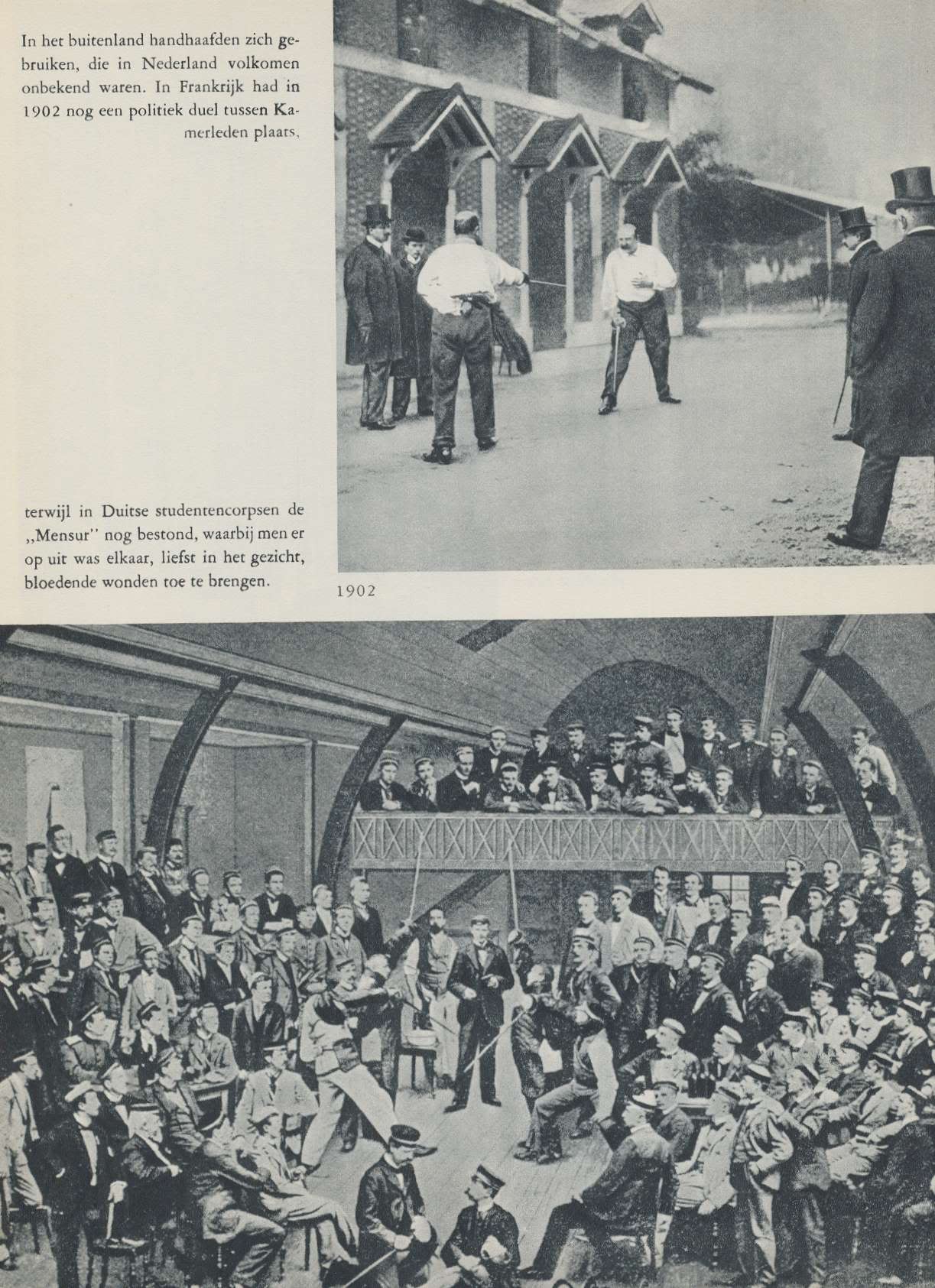
“In foreign countries, traditions completely unknown in The Netherlands persisted. In France there was a duel between two members of the chamber in 1902, while in German fraternities ‘Mensur’ still existed, where the goal was to hurt each other so he’d bleed, preferably in the face.”
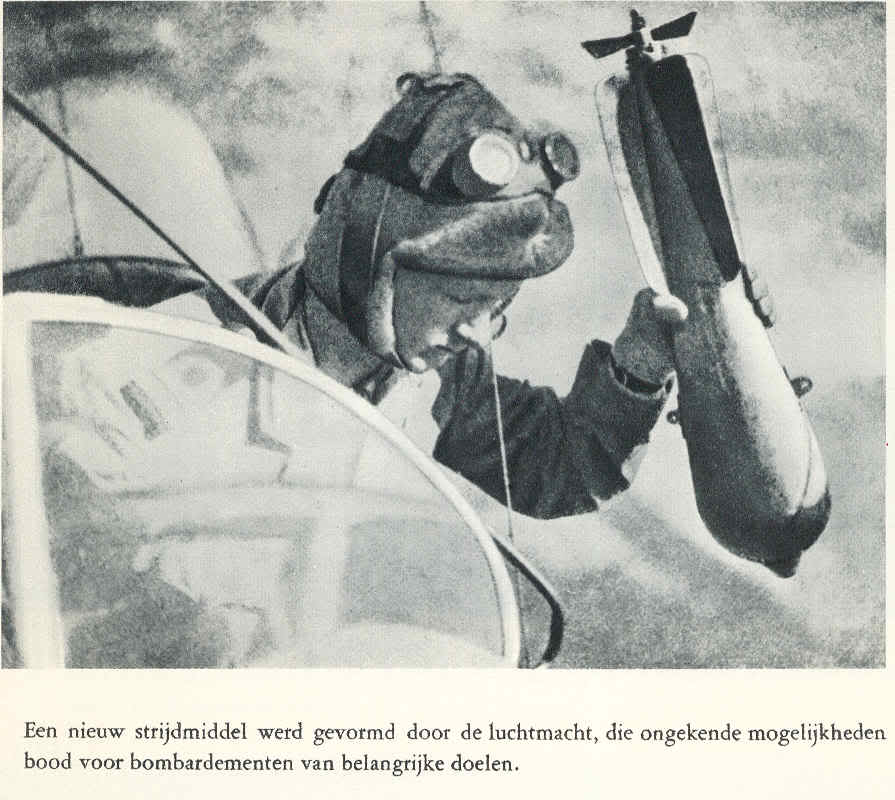
“The airforce was a new weapon, which enabled previously unthought of possibilities for bombing of important targets.”

“Science continued, despite the international uproar. In 1915 Shackleton researched the South-pole area, while his ship, the ‘endurance’ was cracked by ice. The discovery of the grave of Tut-ankh-amon in 1926 was remarkable.”

“On the side of the government [of Spain] women actively participated in battle, while numerous volunteers joined forces both for and against the republican government.”

“Of the heart of the prosperous harbor-city of Rotterdam, only wasteland remains.”
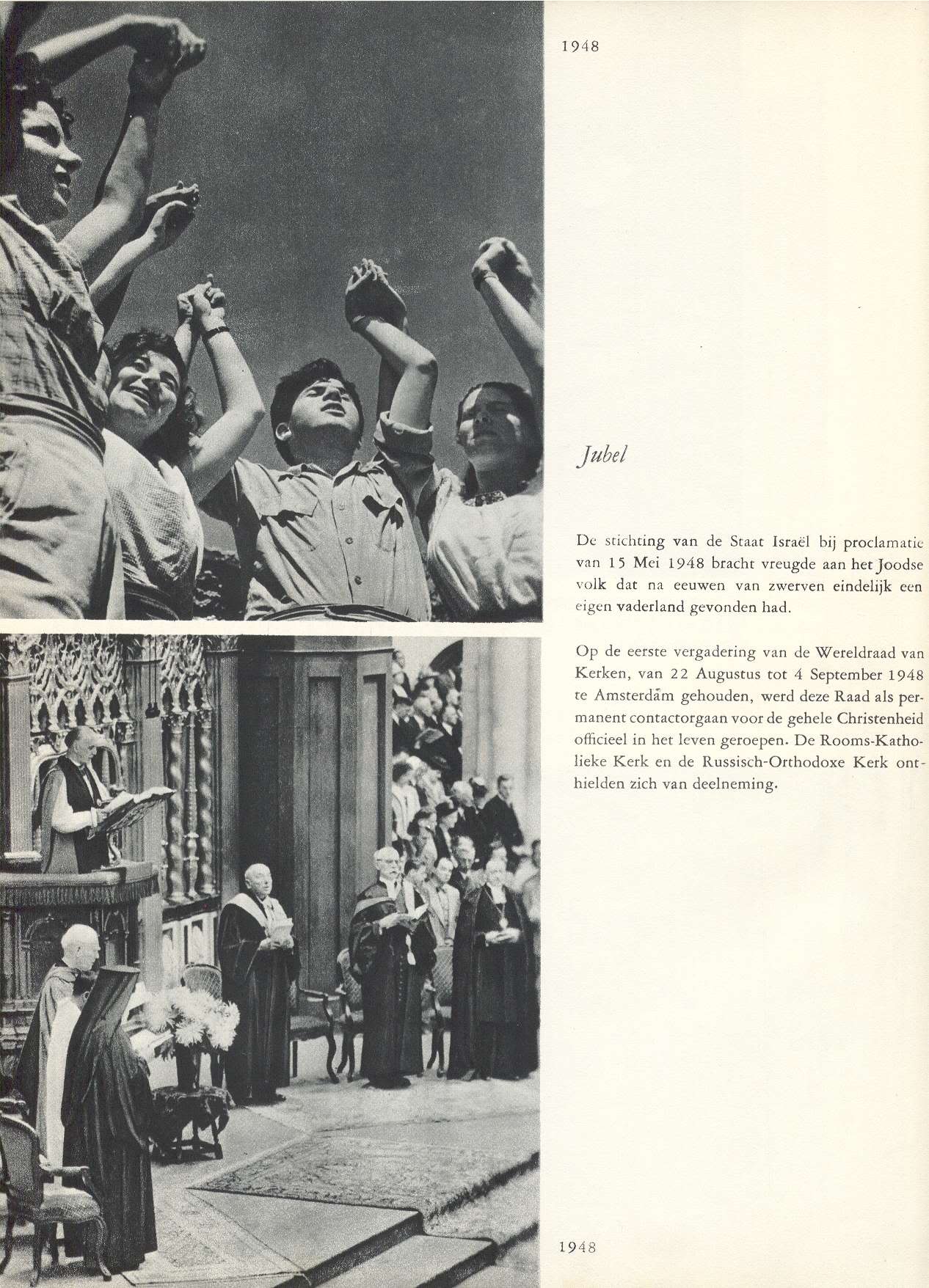
“The creation of the state of Israel on 15 May 1948 brought happiness to the Jewish people who finally found a mother country after all those centuries of wandering. On the first meeting of the world council of chuches, 4 September 1948 in Amsterdam, it was created as permanent contact-point for all Christians. The Catholic Church and the Orthodox Russian church were not present.”

“Because of the advancing communist troops in China, the waterways in Shanghai had to harbour uncountable amounts of sampans. In The Netherlands all attention was concentrated on the developments in Indonesia, which led to the round-table conference.”
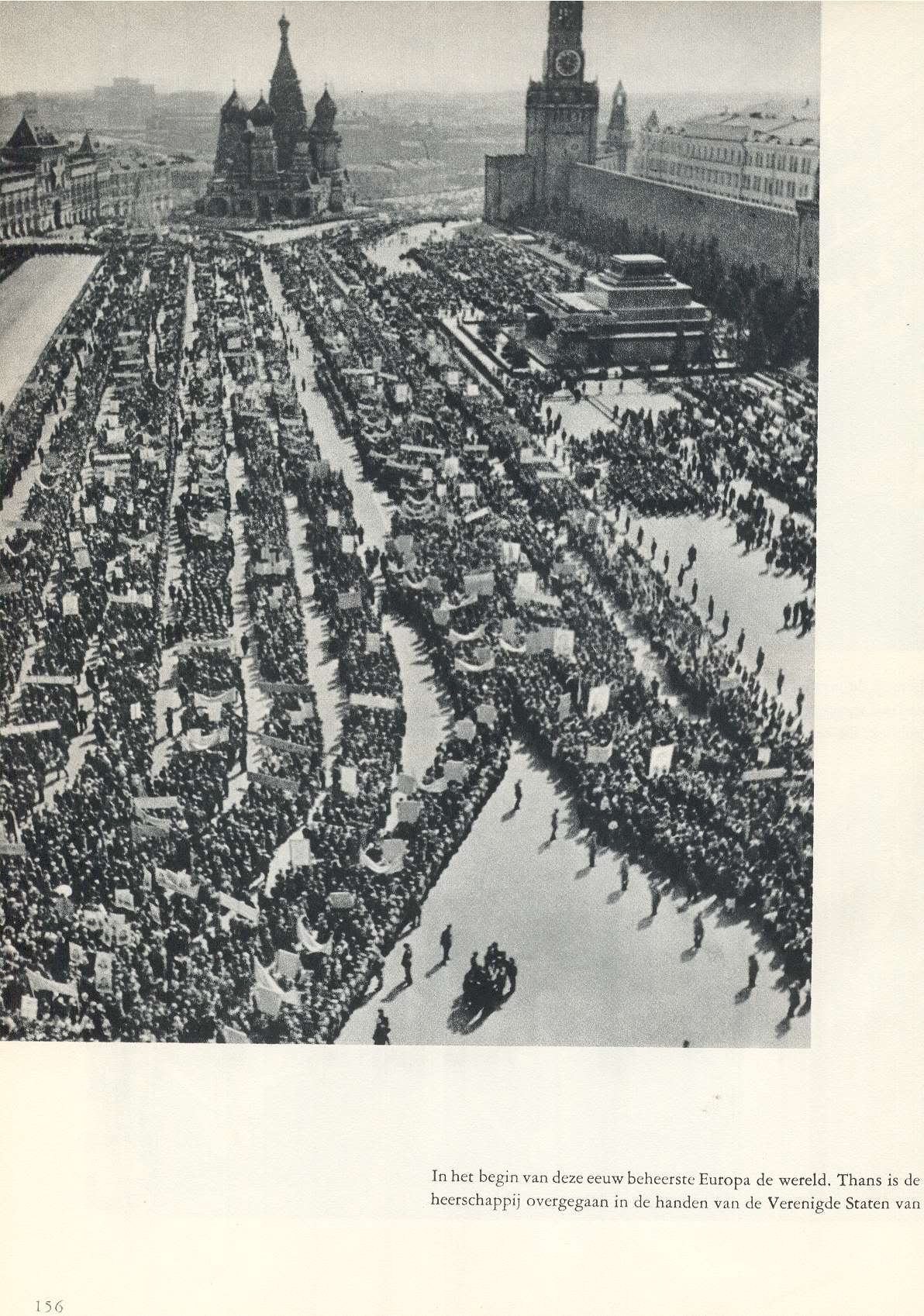
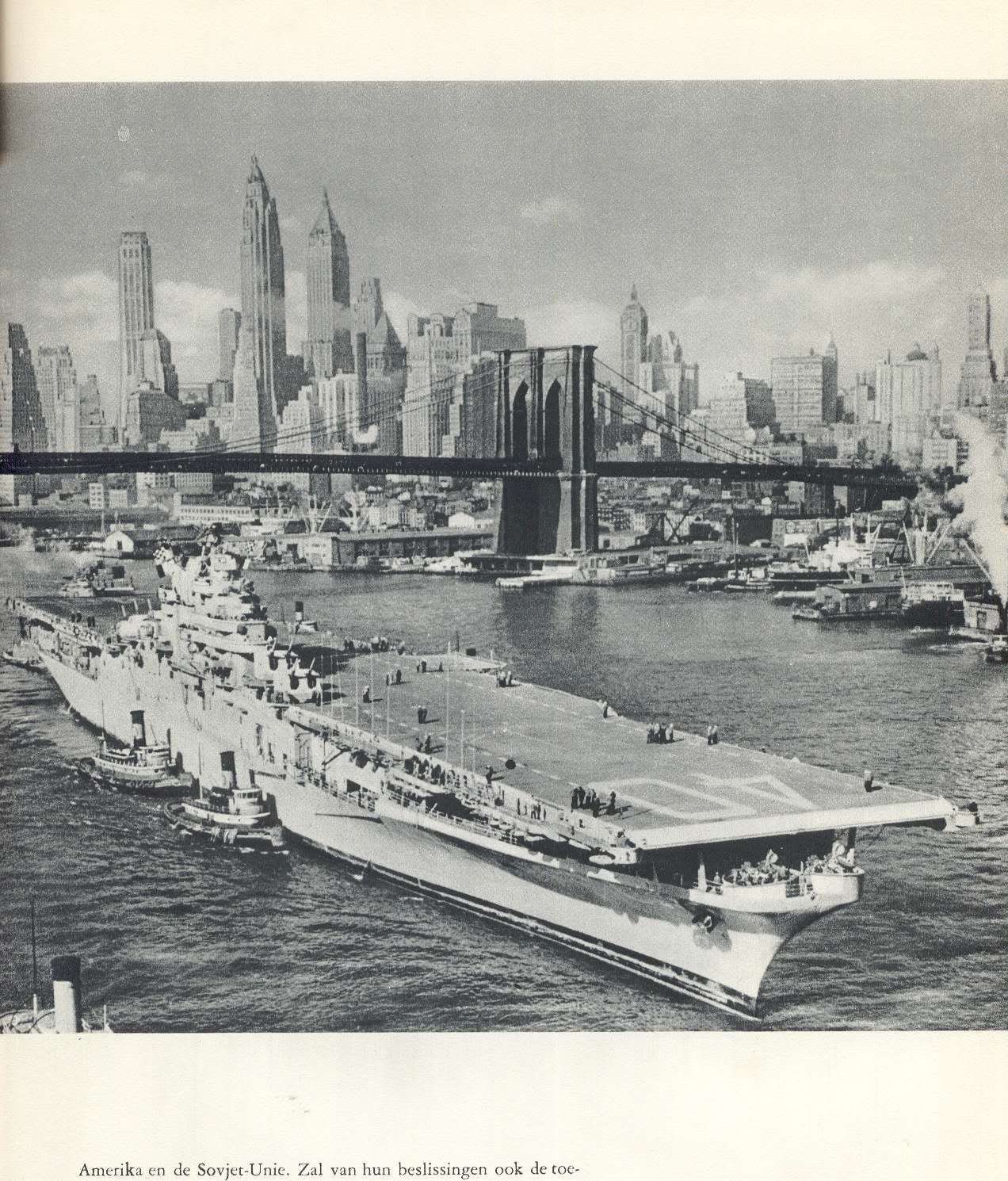
“At the beginning of the century Europe dominated the world. Now the power swifted to the hands of the United States of America and the Soviet Union. Will their decisions decide the future of our continent?”